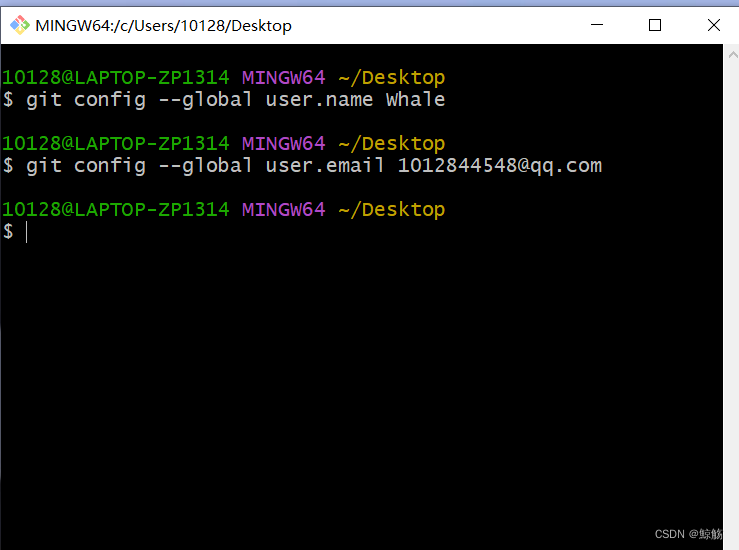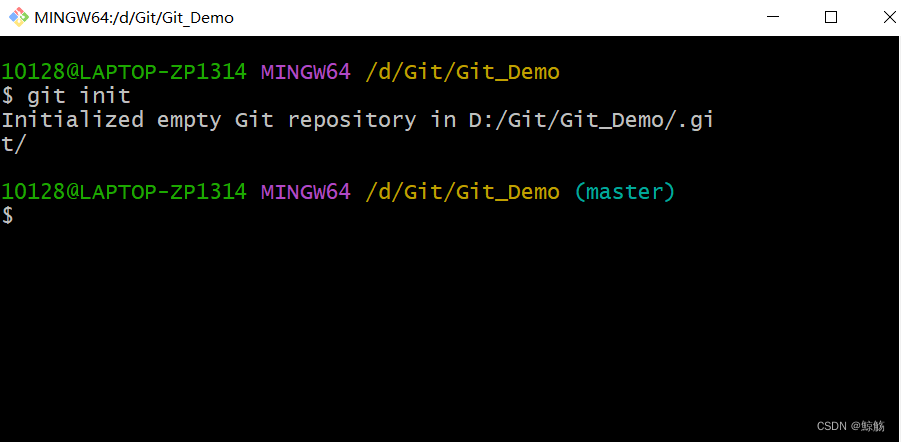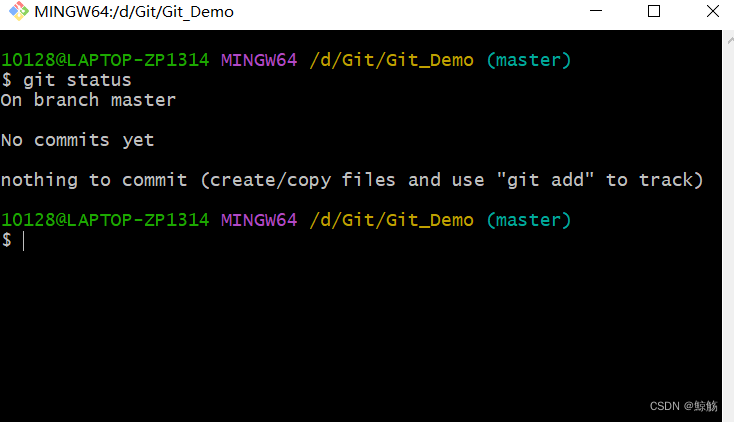1、设置用户签名
①基本语法:
git config --global user.name 用户名
git config --global user.email 邮箱
②实际操作

③查询是否设置成功
cat ~/.gitconfig

注:签名的作用是区分不同操作者身份。用户的签名信息在每一个版本的提交信息中能够看到,依此确认本次提交是谁做的。Git首次安装必须设置一下用户签名,否则无法提交代码
注:这里设置用户签名和将来登录GitHub(或其他代码托管中心)的账号没有任何关系
2、初始化本地库
①基本语法
git init
②实际操作

3、查看本地库状态
①基本语法
git status
②实际操作
